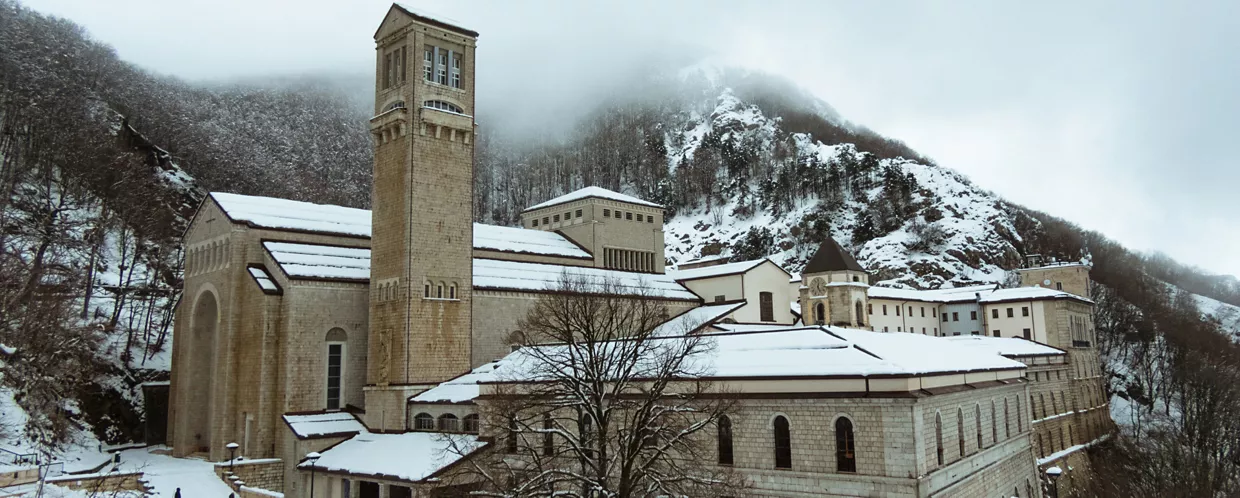This content was automatically translated. View the original text.


Overview
In the 12th century, while on pilgrimage to the Holy Land, William of Vercelli stopped here, on the southern slope of Mount Virgin, not far from Avellino, to build a sanctuary dedicated to Our Lady and found the Virginian monastic order. From that time, the basilica and monastery experienced a period of great splendour thanks to the favour of the kings of Sicily. They then underwent a period of decline until becoming a commendam in 1430. The basilica, divided into two parts, is accessed through a courtyard. Opposite is the entrance to theAbbey Museum, which houses a 12th-century abbot's chair with Arabic-style inlays, the late 12th-century panel of the Madonna of St. William and a 13th-century wooden crucifix by the French school. There are also paintings from between the 15th and the 18th centuries, statues from the 12th-15th centuries and vestments from the 12th-13th centuries. The Permanent Nativity Exhibition displays a Neapolitan nativity scene and examples from around the world from the 17th century to the present day. To the left is the Old Church, a Baroque reconstruction of an earlier Gothic building; the high altar, inlaid with mother-of-pearl, lapis lazuli and agate, dates back to the mid-17th century, while in the Blessed Sacrament Chapel, to the right of the main chapel, there is a canopy from the second half of the 13th century (later modified), with a 15th-century marble tabernacle. To the left of the old church, an archway gives access to the new church, built in 1952-61 inspired by Romanesque forms. Built on a Baroque place of worship, of which it incorporates almost the entire left aisle, it is imposing (measuring 54 m long by 25 m wide). What catches the eye, however, is the high altar, on which – above a throne of marble, bas-reliefs and bronze and silver statues – is proudly displayed a large painting of the Madonna of Montevergine, known to the faithful as 'Mamma Schiavona', a work of art from the end of the 13th century by Montano di Arezzo, venerated every year by more than a million pilgrims who come here. A modern monochrome mosaic by Jànos Hajnal serves as a backdrop for it. The crypt houses the tomb of William of Vercelli.